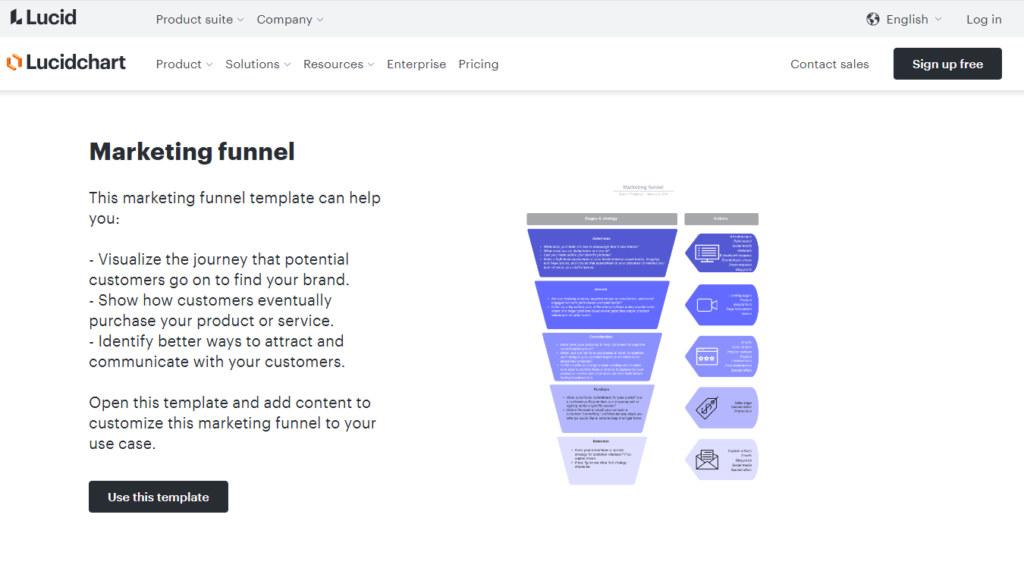A marketing funnel is not the same as a customer journey and it deserves its own article.
Please note: This is an introductory article, I will go into using marketing funnels in search engine marketing in future articles.
In general, marketing funnels focus on the stages leading to a sale, while the customer journey covers a broader spectrum of interactions, including the post-purchase stages.
Both marketing funnel and customer journey are great tools for planning and presentation. These tools help to conceptualize your search engine marketing efforts as well as present results to the team.
Definition
A funnel-style diagram representing the stages a prospective customer goes through before making a purchase.
A typical funnel includes top (TOFU or top of funnel), middle (MOFU or middle of funnel) and bottom (BOFU or bottom of funnel) sections. Here’s a simple illustration from Ahrefs.
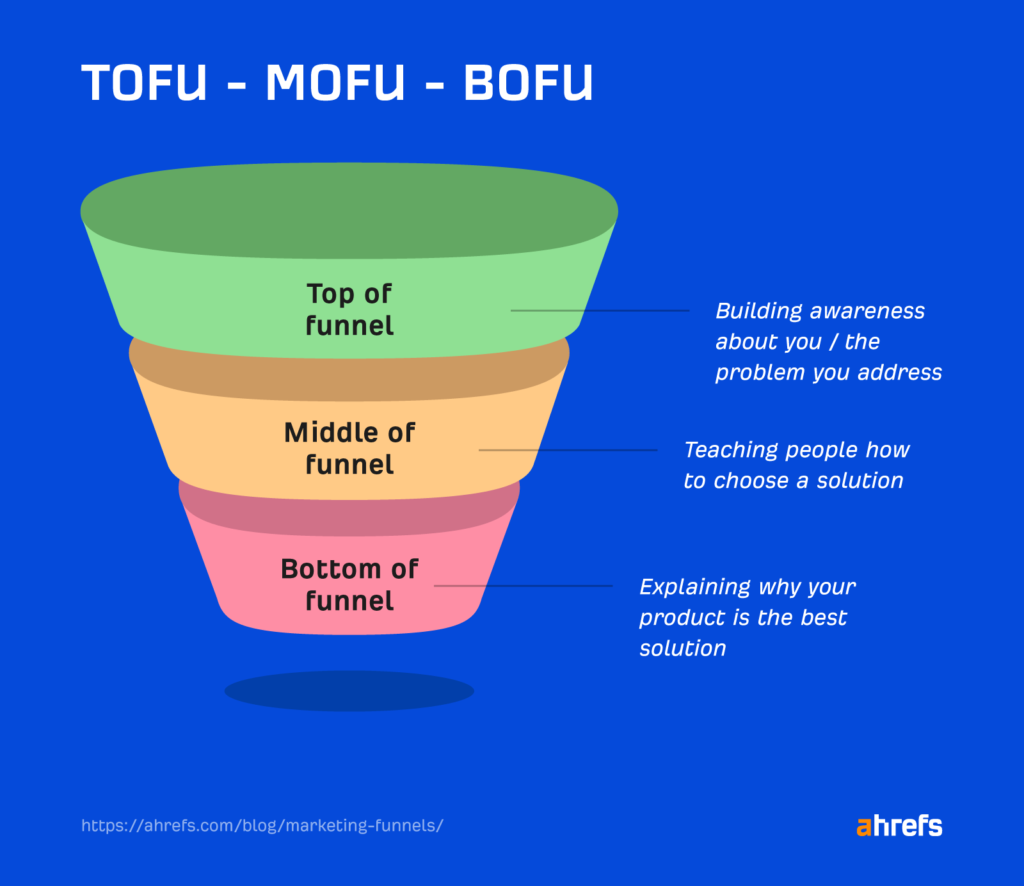
Benefits
Understanding the concept of marketing funnels has several benefits.
Helps to know the lingo
You will deal with colleagues and vendors who will mention TOFU, MOFU, and BOFU. Knowing what that is will help you communicate more effectively.
Structures channels
Each stage of the marketing funnel is unique and employs unique channels to reach prospective customers. Understanding each stage will help you choose the right channels.
Categorizes content
Just like channels, content is also very funnel-stage-specific. Understanding each stage will help you craft content relevant and valuable at each stage of the funnel.
Communicates your strategy
Marketing funnel is a great strategic communication tool. It helps to share your marketing approach with your team, partners and stakeholders. Check the templates and tools at the bottom of the article to use for your next presentation.
Now, let’s explore each stage of the funnel.
Stages
Top of funnel
In the TOFU (Top of Funnel) stage, focus on creating awareness and capturing the attention of your audience. Effective channels include:
- Search Engine Optimization (SEO): Optimize your website for relevant keywords to improve visibility on search engines.
- Content Marketing: Produce informative blog posts, articles, and infographics to showcase your expertise and address potential customer pain points.
- Social Media: Share engaging content on platforms like TikTok, Instagram, LinkedIn, Twitter, and Facebook to reach a broader audience.
- Video Marketing: Create educational videos to explain your products or services and connect with your audience visually.
- Paid Advertising: Use Google Ads, Bing Ads, or social media ads to target specific demographics and increase brand exposure.
Examples of content for TOFU:
- Educational Blog Posts: Provide valuable information related to your industry or niche.
- Infographics: Present data or concepts in a visually appealing format.
- How-to Videos: Demonstrate the usage or benefits of your products/services.
- Social Media Posts: Share industry insights, tips, and engage with your audience.
Remember, in the TOFU stage, the goal is to build awareness and interest in your brand without directly promoting products or services.
Middle of funnel
In the MOFU (Middle of Funnel) stage, your goal is to nurture leads and guide them toward making a decision. Effective channels and content examples include:
- Email Campaigns: Send targeted emails with content that addresses specific pain points, provides solutions, and positions your brand as a reliable source.
- Lead Magnet Content: Offer valuable resources such as ebooks, whitepapers, or guides in exchange for contact information, further nurturing the relationship.
- Webinars and Workshops: Provide in-depth sessions that showcase your expertise, address challenges, and offer insights to move leads closer to a decision.
- Drip Campaigns: Implement automated drip campaigns that deliver a series of relevant content over time, keeping leads engaged and informed.
- Remarketing Ads: Tailor ads to the interests and behaviors of leads who have interacted with your brand, reminding them of the value you offer.
Examples of content for MOFU:
- Educational Webinars: Dive deeper into industry topics, addressing challenges and offering solutions.
- Comparison Guides: Help leads evaluate different solutions, positioning your offerings favorably.
- Interactive Content: Quizzes, assessments, or interactive tools that engage leads and provide personalized recommendations.
- Behind-the-Scenes Content: Showcase your company culture, processes, and the people behind your brand to build a connection.
In the MOFU stage, content should provide value, answer specific questions, and position your brand as a trusted authority, helping leads make informed decisions.
Bottom of funnel
In the BOFU (Bottom of Funnel) stage, the focus shifts to converting leads into customers. Key channels and content examples include:
- Email Marketing: Nurture leads through personalized email campaigns, offering exclusive promotions or detailed product information.
- Retargeting Ads: Use display ads to reconnect with users who have previously visited your website, reminding them of your products or services.
- Webinars: Host webinars showcasing the value and features of your offerings, allowing potential customers to engage and ask questions.
- Case Studies: Highlight success stories and real-world examples of how your products or services have solved problems for existing customers.
- Free Trials/Demos: Offer trials or demonstrations of your product to allow potential customers to experience its benefits firsthand.
Examples of content for BOFU:
- Product Comparison Guides: Help customers make informed decisions by comparing your products/services with alternatives.
- Customer Testimonials: Showcase positive feedback and experiences from satisfied customers.
- Exclusive Offers: Provide special discounts, promotions, or bundles for those ready to make a purchase.
- FAQs and Product Documentation: Address potential concerns by providing detailed information about your products or services.
In the BOFU stage, the content should aim to address specific concerns, build trust, and encourage the conversion of leads into customers.
Examples
Not all marketing funnels are the same. Marketers and business owners adapt funnels to their specific business. Let’s take a look at a couple of examples.
Example 1
FirstPageSage is showing five stages of the funnel from Discover to Interest, Appraisal, Confirmation and Conversion. The diagram below shows channels and Key Performance Indicators (KPIs) to track at each stage.
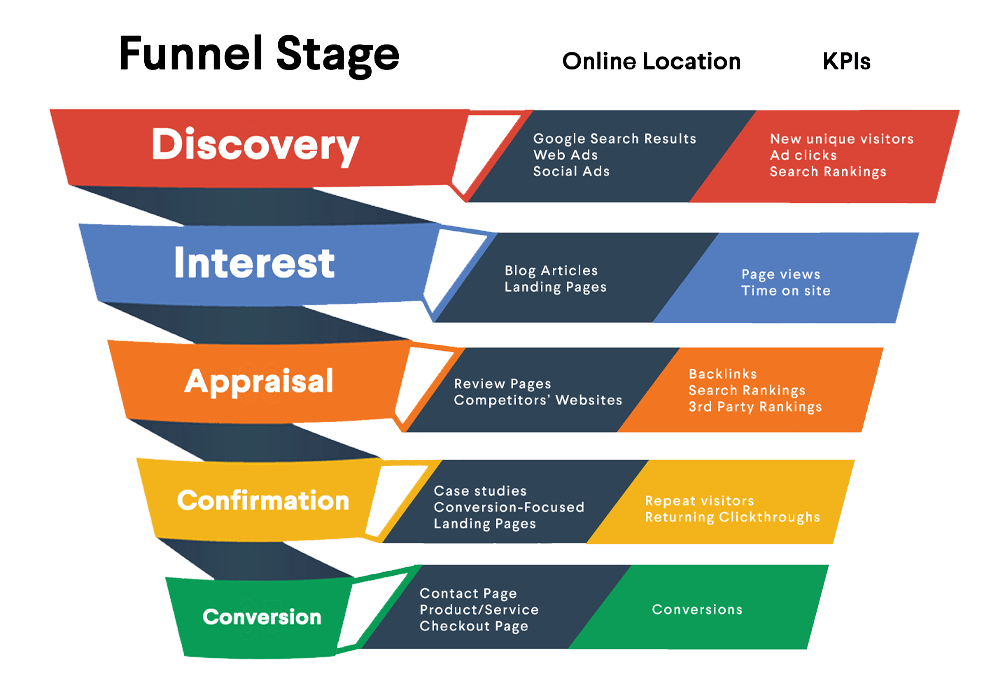
Example 2
This other example by Skyword shows a more detailed funnel and adds a stage. Check the descriptors for each stage to the right of the funnel.
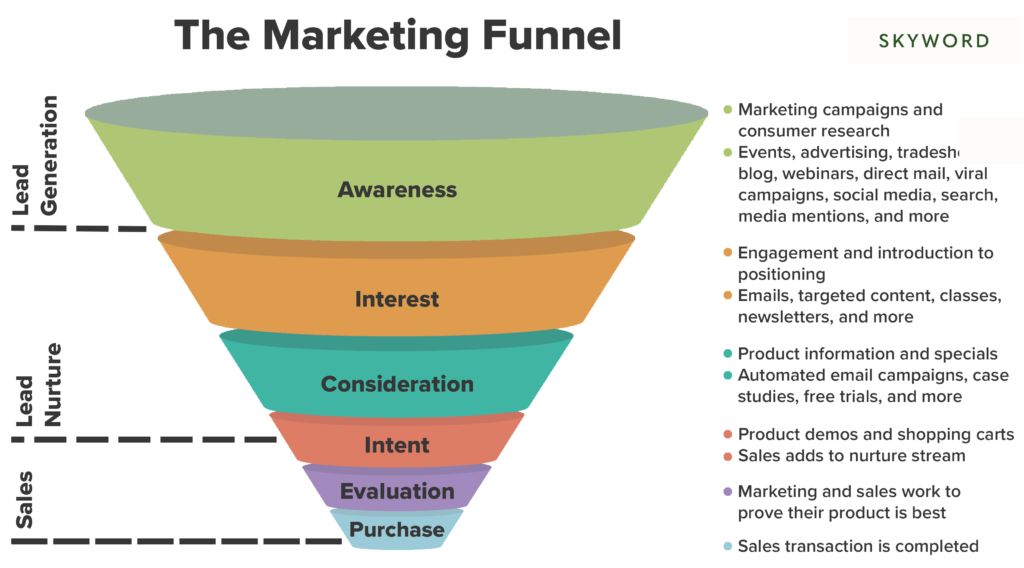
Templates
Here are a few marketing funnel templates in case you need to present your funnel to someone.
Miro
Miro is offers a collection of templates for marketers and business owners. One of those templates is for marketing funnels.
Miro has a free plan that allows to edit and export your edited diagrams.
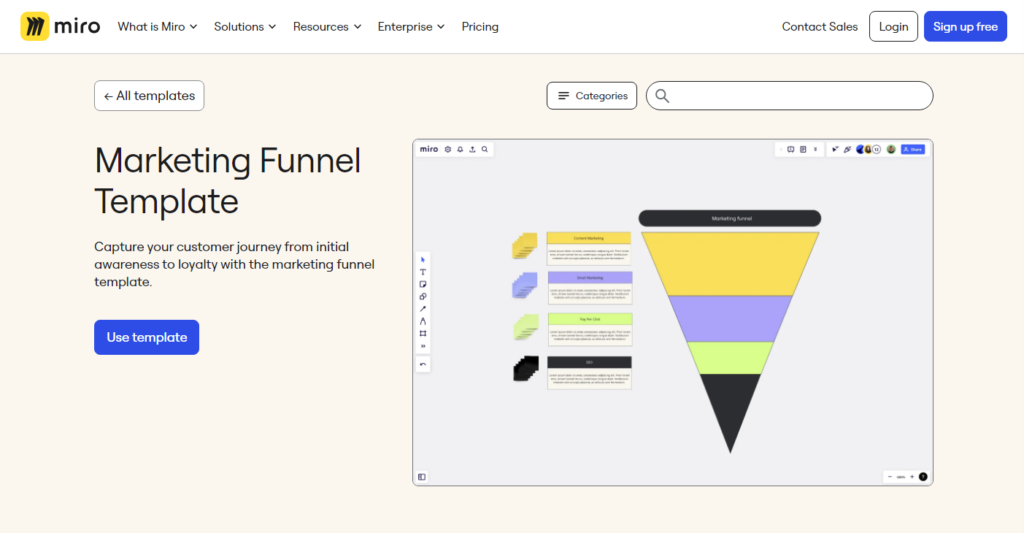
Canva
Canva is an online Photoshop that is easy to use even for beginners. They have many templates for all kinds of design requirements including marketing funnel diagrams.
Some basic templates are free to use, others will require a paid version. Check to see if the free version if sufficient for your needs.
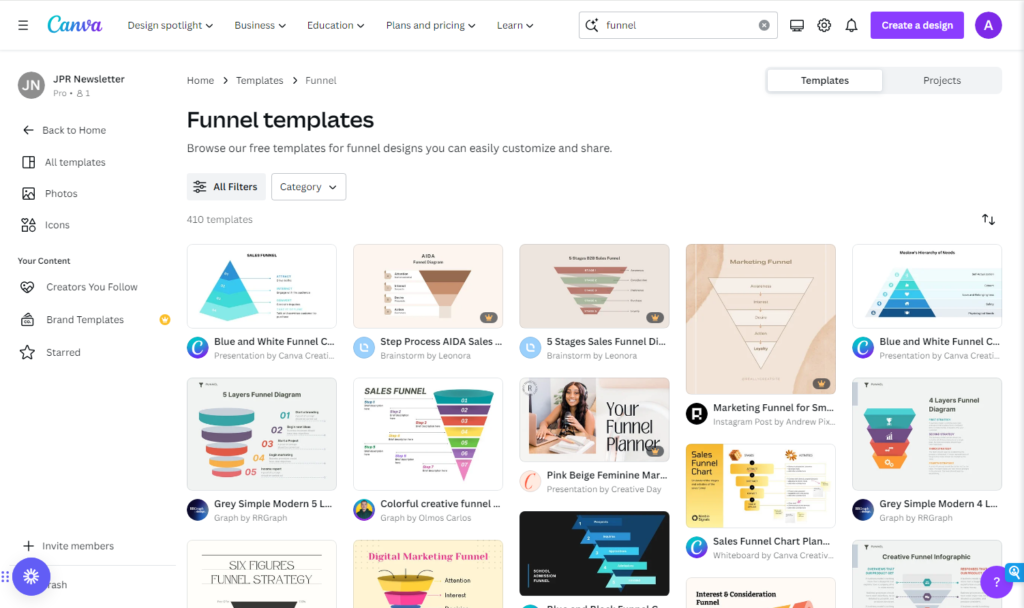
FigJam by Figma
Similar to Canva, Figma has a lot of templates. You can try Figma templates for free but you will need to log-in to edit and export the template.
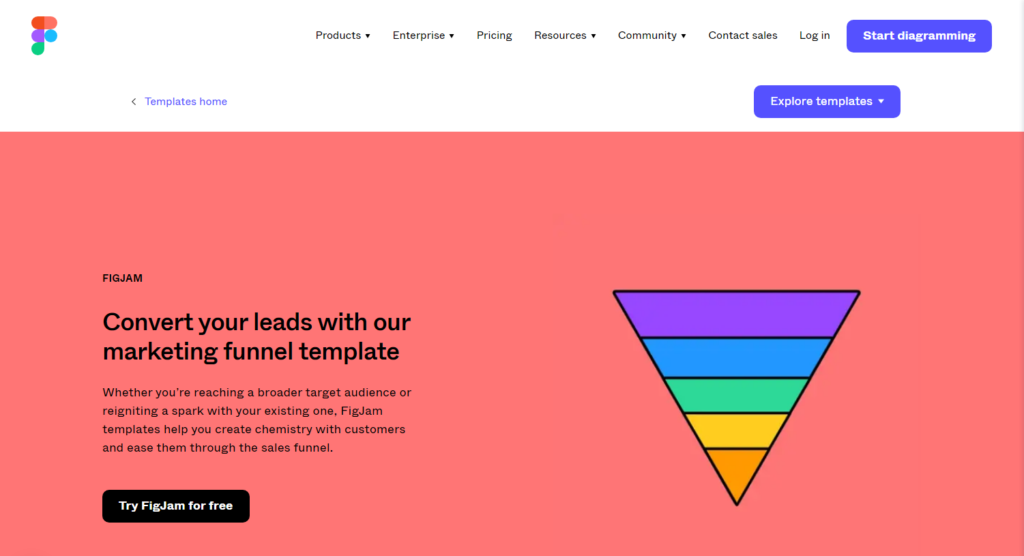
LucidChart
LucidChart is another SaaS tool that allows individuals and teams diagram together. Similar to the other tools, LucidChart offers a collection of templates including a marketing funnel.
You will need to create a free account to edit and export the template.
